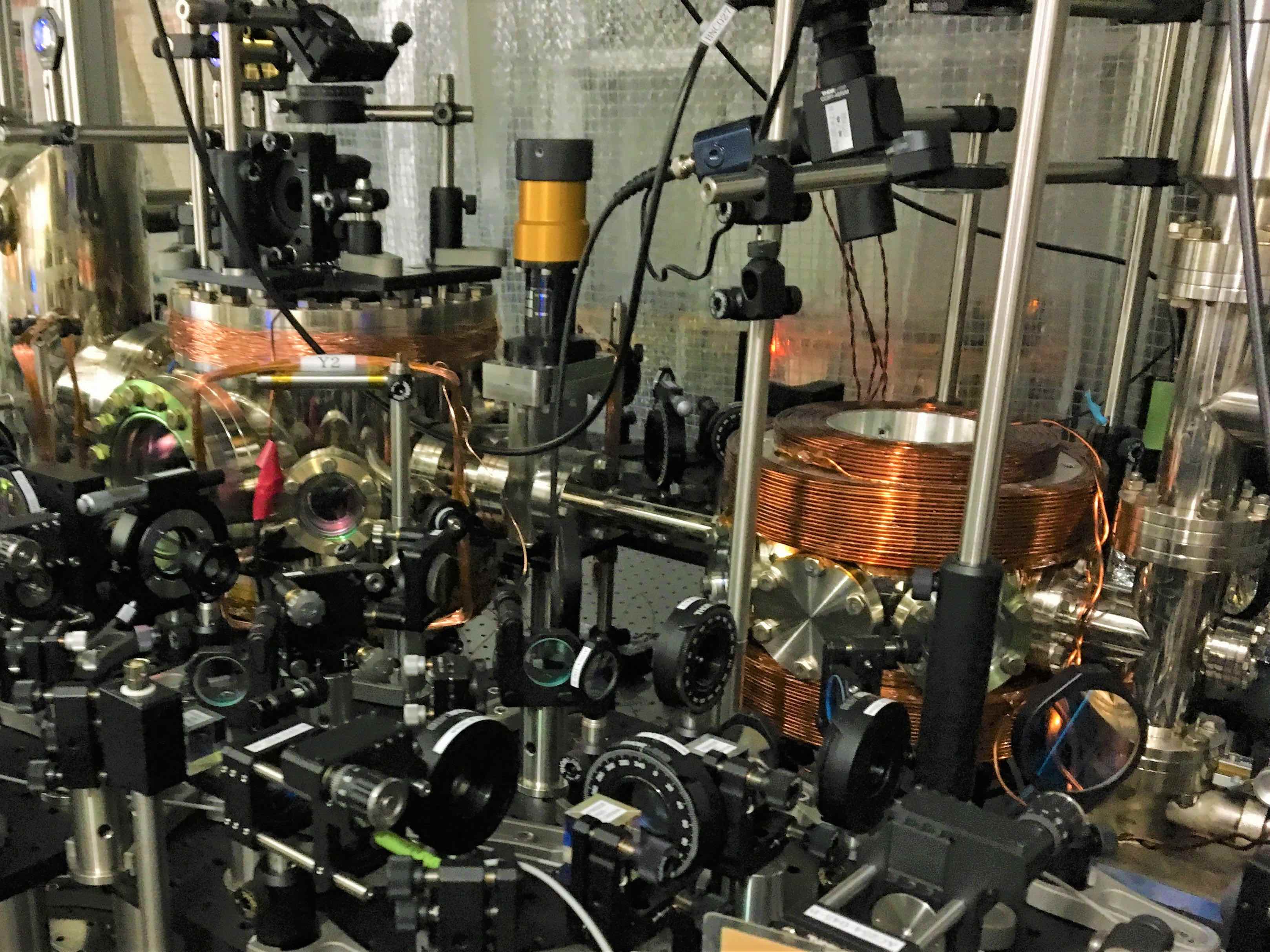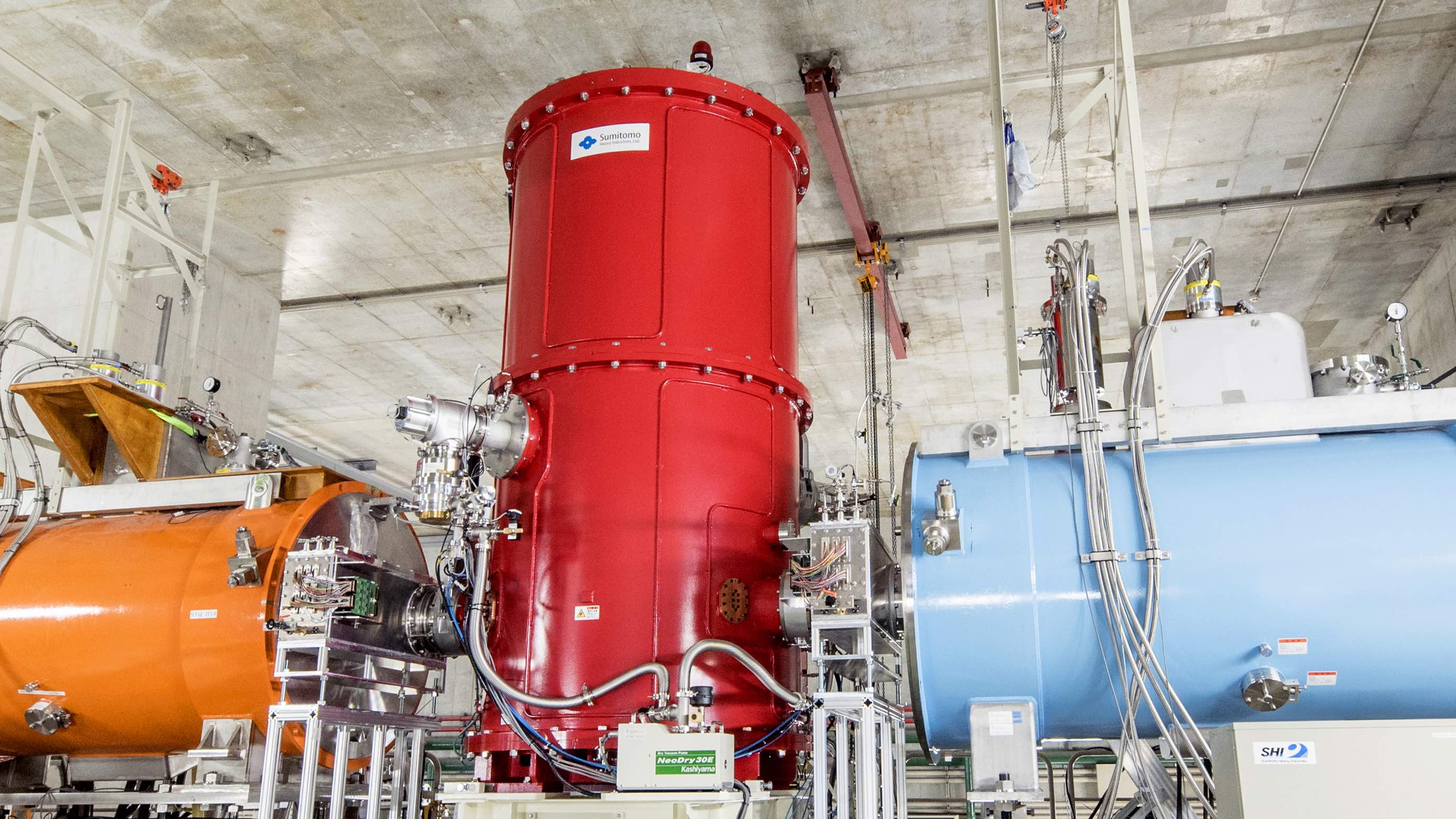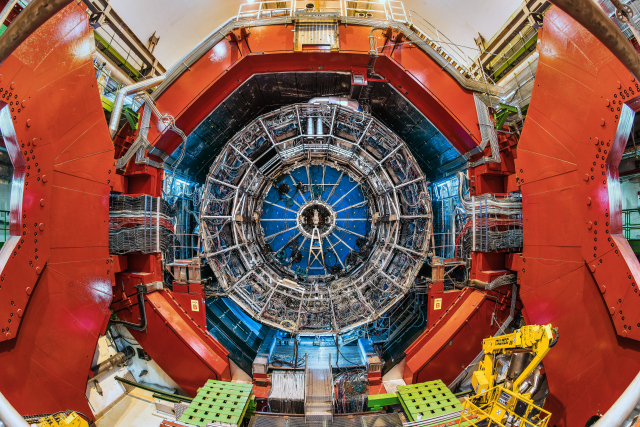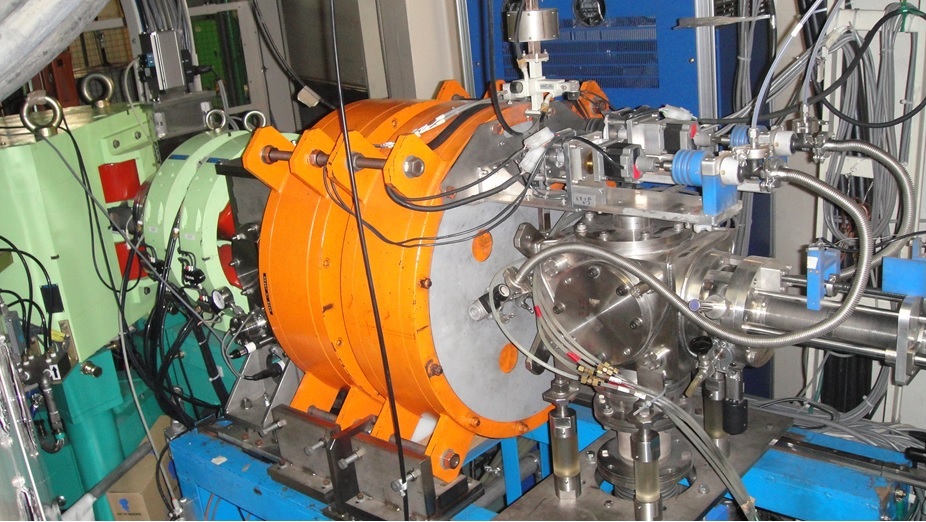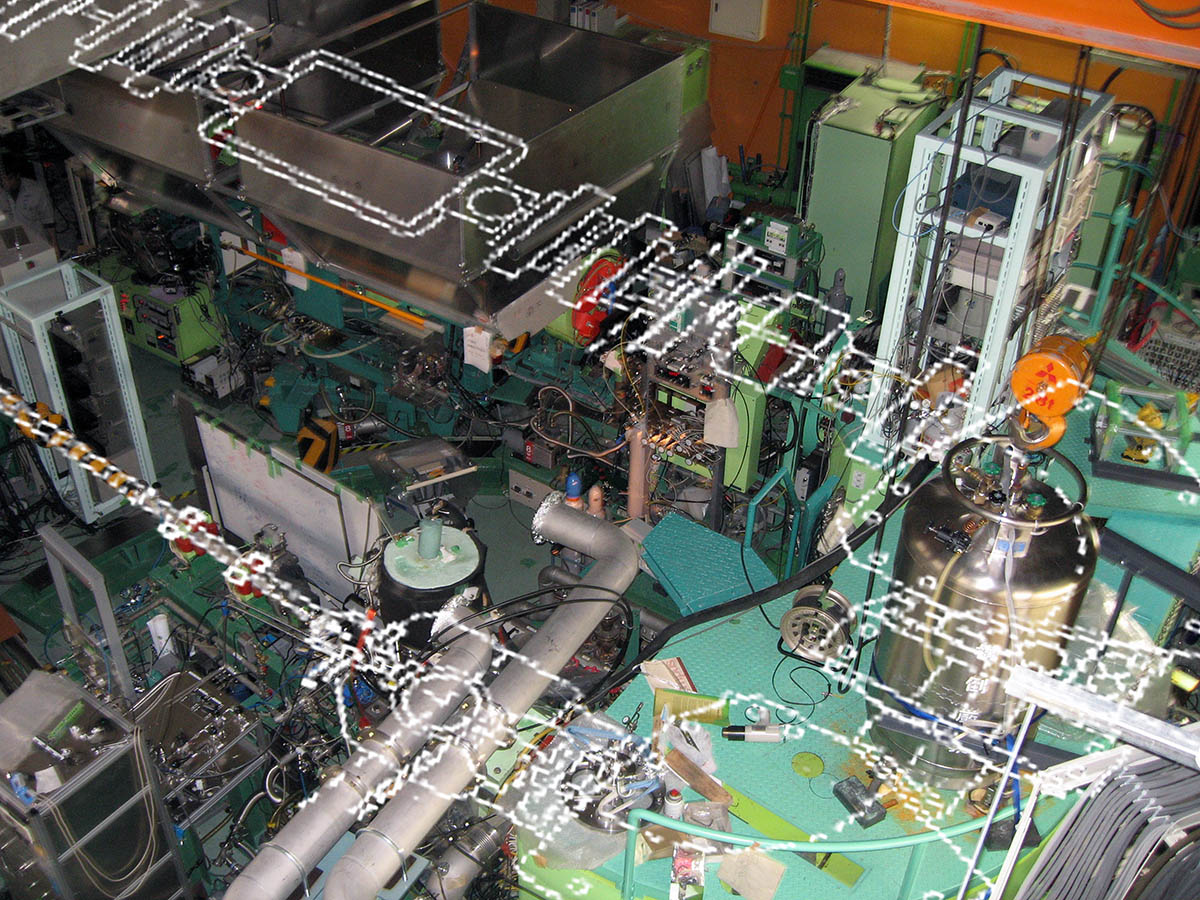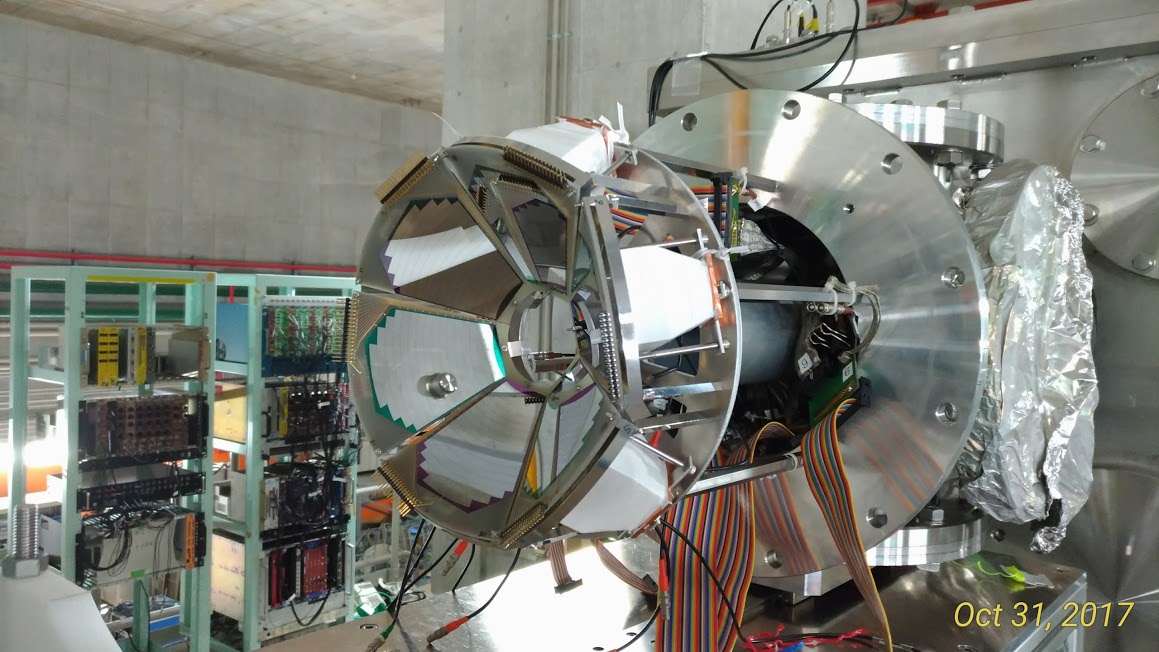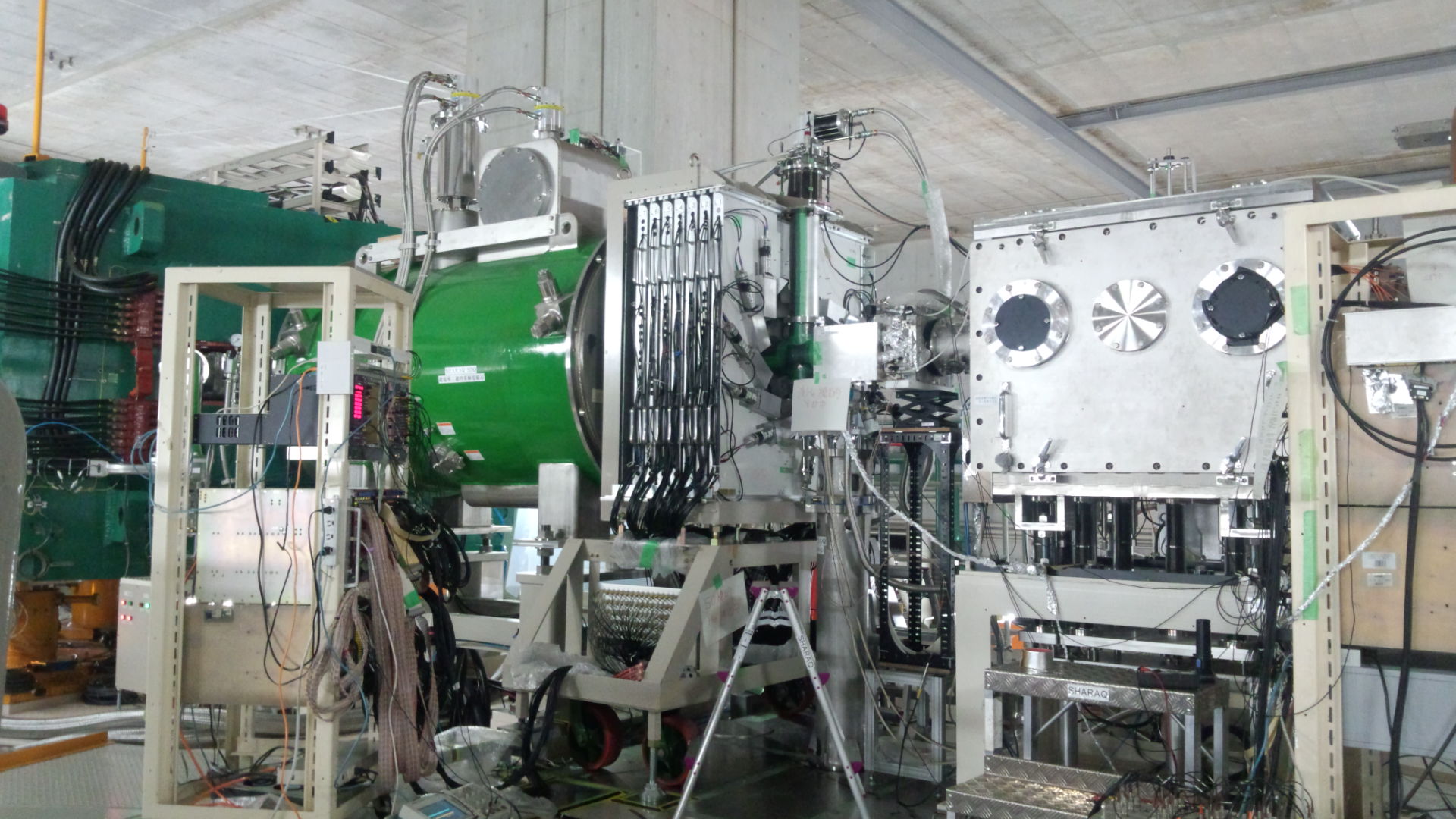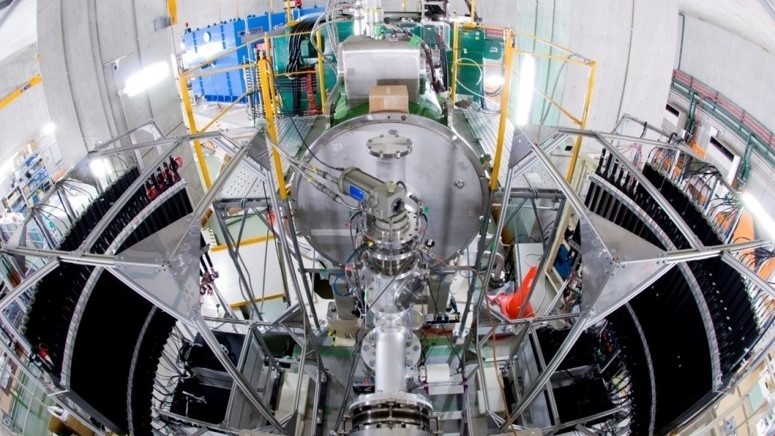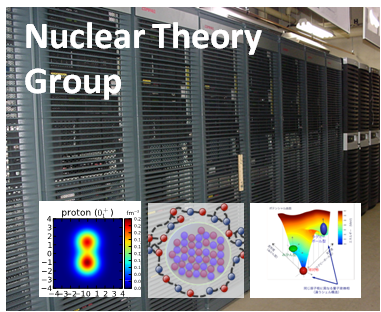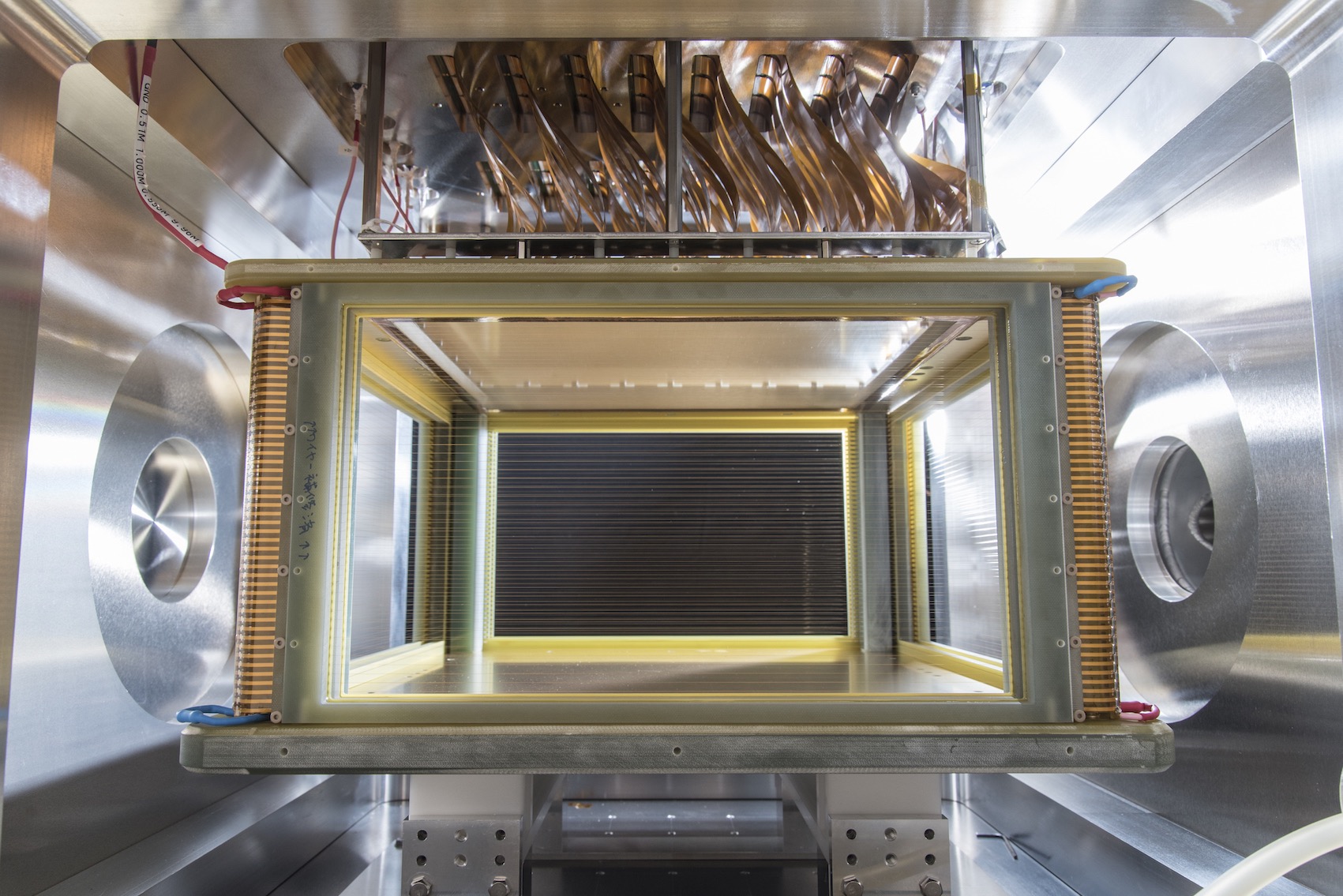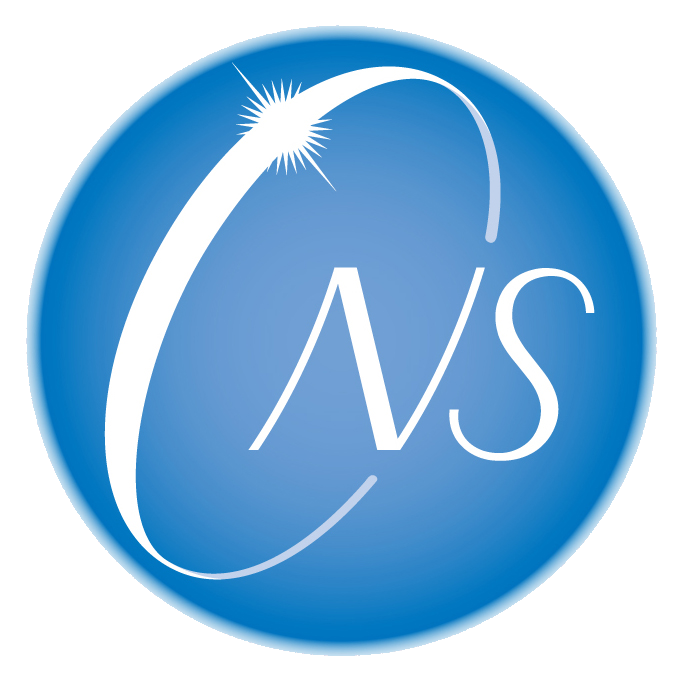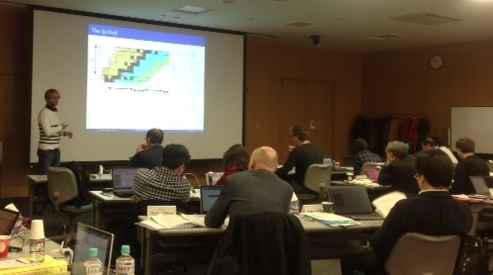2017
2017-02-17
Paper on Microscopic structure of the “island of inversion” nucleus in the visinity of Mg” has been published.
2016
2016-12-28
A paper on the structure of the C-14 nucleus based on the experiment at CRIB.Measuring the resonant scattering of Be-10 nucleus and alpha particle, a strong indication of linear-chain clustered nucleus, which had been discussed since 1950s, was found for the first time.
2016-12-08
Dear colleagues,
The Center for Nuclear Study at the University of Tokyo is calling for applications for postdoctoral research fellows in the field of experimental and theoretical nuclear physics. Details can be found below. We would appreciate it, if you could distribute the advertisement to potential candidates.
Sincerely,
Susumu Shimoura
Director of Center for Nuclear Study, University of Tokyo
Opening of Postdoctoral Researchers at Center for Nuclear Study, University of Tokyo
CNS has several devices in RIBF in RIKEN Nishina Center and pursues the experimental nuclear physics such as nuclear astrophysics and nuclear structure/reaction studies with radioactive isotope beams. We also have branches of fundamental physics with radioactive heavy elements, high-energy nuclear physics, nuclear theory and development of ion sources.
JOB TITLE: postdoctoral researcher, a few positions available
FIELD: Experimental and theoretical nuclear physics.
The successful candidates will work on experimental nuclear physics with radioactive isotopes mainly by using the devices of CNS (CRIB, SHARAQ, Ge array (GRAPE), OEDO, Active Target, etc…), on fundamental physics with radioactive heavy elements, on high energy nuclear collisions at ALICE at LHC, or on nuclear structure theory.
ELIGIBILITY: They must hold a recent Ph.D degree in experimental/theoretical nuclear physics, or a related field by April 1, 2017.
EMPLOYMENT:
One-year fixed-term employment contract, renewable, based on the evaluation, up to March 31, 2020. The start of the employment is April 1, 2017 (negotiable).
Health and unemployment insurance plans are available.
SALARY: ~ 300,000 yen/month (gross).
Additionally commuting expense will be covered.
APPLICATION MATERIALS:
(1) CV
(2) List of Publication/Talks/etc.
(3) Research summary and future plan at CNS
(4) Names and contact details of reference
will be sent as a combined PDF file (1-4) to
n.imai at cns.s.u-tokyo.ac.jp ("at” replaced by “@")
with a subject field “Application to PostDoc at CNS “.
Interested candidates are encouraged to contact the relevant at CNS.
DEADLINE OF APPLICATION: January 6th (Fri.) 2017
After initial screening, interviews will be arranged in middle January. Interviews will take place at Wako and consist of a presentation of the research achievements and plans followed by an interview. For applicants from abroad, the interview will be conducted via Skype or TV conference system.
We acknowledge, understand and embrace diversity.
Contact:
Nobu Imai
Associate Professor
Center for Nuclear Study, the University of Tokyo
n.imai at cns.s.u-tokyo.ac.jp
2016-12-05
Nishina Memorial Lectures on the celebration for the discovery of Nihonium were given. About 250 onsite audiences as well as over 100 network audiences enjoyed the lectures. <! – インターネット中継(当日) –>
2016-Nov-30
森田浩介氏(九州大学教授、理化学研究所仁科加速器研究センター)の率いる研究チームが発見した113番元素について、IUPAC(組織国際純正・応用化学連合)は森田チームに命名権を与えました。森田チームは113番元素に「ニホニウム(Nihonium)」という名前を提案、2016年11月28日に承認されました。日本が発見した元素が初めて周期表に加わるというこの快挙に東大CNSも貢献しており、大変光栄です。
CNS の装置がニホニウムの発見に貢献!
113番元素の生成にあたり、森田チームは亜鉛(Zn原子番号30)の原子核とビスマス(Bi 原子番号83)の原子核を衝突・融合させる cold fusion という手法を用いました。実験条件の最適化にあたり、ビームエネルギーが高すぎると破砕反応が主となり融合反応は起こらなくなる一方、低すぎると標的核とビーム核との静電反発力によって核表面同士が接触せずやはり融合反応を起こし難くなります。このため、通常、正面衝突をした核同士の表面がちょうど接触する程度の衝突エネルギーが選ばれます。
ところが、当初理研が所有していたイオンビーム加速装置だけでは理想的な衝突エネルギーに達しないという問題がありました(*)。このため、東大と理研の間で協議し、平成12年度に東大CNSと理研が共同で導入した CSM (Charge-State Multiplier:荷電状態倍率器)をエネルギー増幅装置として経常的に用いることにより、最適な実験条件を実現しました。以降、超重元素探索は理研-東大の共同事業となっています。
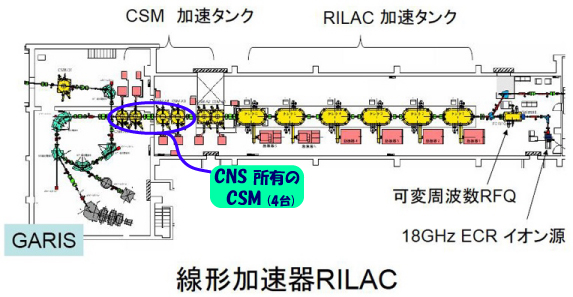
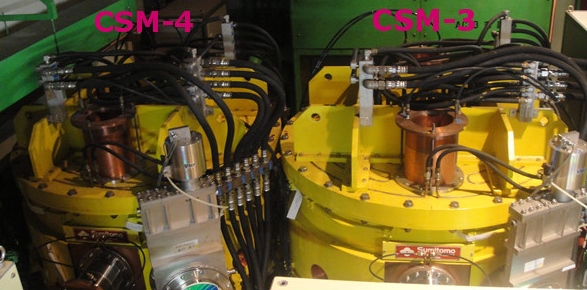
(*注) 113番元素の分析に使われた気体充填型反跳分離器(GARIS)はRIBFの建設に伴いRILACの実験室に移転していました。113番元素の探索には、RILAC加速器の増強が必要でした。RILACの増強は、平成12年にCNSが田無キャンパスから理研和光への移転したのを機に、理研との共同研究として荷電状態倍率器を導入したことで実現しました。
共同実験者の声
実験当時、CNSの講師として森田チームと共同研究を進めていた井手口栄治氏(現阪大核物理研究センター准教授)は、113番元素を「目撃」した数少ない実験メンバーの一人です。井手口氏がコメントを寄せてくれました:
超重元素探索実験ではオンラインの解析画面が用意されていて、ある条件で粒子が最下流のシリコン検出器に届くとウィンドウが開き、粒子が検出された位置に相当する部分に赤いバツ印が1つ現れます。この条件は比較的ゆるく設定されているので、1-2時間に1回くらいはウィンドウが開きます。しかし殆どが偽イベントです。実験シフトを採ると一人で来る日も来る日もこれをみて12時間ほど過ごすのですが、時折ビーム強度が変化していないか注意しながら必要に応じて隣の部屋にいる加速器オペレータの方に調整をしてもらいつつ夜を明かすことになり、朝には次のシフトの人と交代します。 しかし、2005年4月2日2:18 に来たイベントのときはいつもと全く様子が異なりました。ウィンドウが開いた時に画面上にいくつもバツ印が重なったのです。これはターゲットで出来た粒子が最下流のシリコン検出器に届いて埋め込まれ、なおかつ同じ位置で複数回粒子が放出されたこと、即ちα崩壊が立て続けに起きたことを意味します。そこで直ちにデータ解析を行い、イベントが起こったときから遡ってデータを調べα粒子が検出された位置、時間、エネルギーを確認しました。α粒子は立て続けに4個放出されていましたが、その検出位置は1mm以内で同じであり、α粒子のエネルギーが1つの事象を除いて113番元素の第1イベントの結果と大きくは違っていないことを確かめました。α粒子のエネルギーが低かった1事象はおそらくα粒子が検出器を飛び出した場合と考えられるので、そのときは113番元素のイベントが来たと確信し、実験ログノートにも記録しました。しかし、それを確定させるには検出器のエネルギー較正を行う必要があり、そのときは一人で出来なかったので、朝まで待って共同研究者が来てから行うことにしました。 朝になって実験チームの森本さん、森田さんたちに会って113番元素のイベントが来たのではないかと話したとき、二人は私以上に大興奮でさっそくエネルギー較正や再度の解析をしてイベントを確認しました。そのとき、私は徹夜明けで疲れていたので休み、夕方の祝杯に参加しました。実験チームを含めて関係者の皆さん大喜びでした。113番元素の第2イベントを観測したとき、関係者の皆さんにもう少し早く知らせたらよかったかもしれませんが、あの数時間は世界でまだ1例しか無い新しい粒子を発見したことに一人でわくわくできた貴重な時間であり、今となっては良い思い出です。研究者でしか味わえない醍醐味と言えるかもしれません。
静かな語り口の中に発見の興奮が垣間見えます。113番元素イベントの観測は、2004年7月23日に続き2件目でしたが「まずイベントは来ないもの」で、その後3件目のイベント(2012年8月12日)まで、森田チームは国際的な競争の中、7年も待つことになります。
森田チームは、113番元素の合成に先立ち、108番-112番元素について確認実験を行い、cold fusion 合成法での融合反応確率を詳細に調べました。この結果から最適ビームエネルギーを高精度で割り出したことが113番元素の発見につながったと言われます。
もう少し詳しく: CSM の役割
重イオンビームを効率的に加速するために、加速粒子についている電子をはぎ取って電荷を増やすことが有効です。CSM はこのための装置です。RIBF では入射用重イオン線形加速器(RILAC)とリングサイクロトロン(RRC)の間に設置されており、全部で6台あります(上図左)。CSM は多くの RIBF 実験においてビームの大強度化に貢献しています。
CSM は、加速器・荷電ストリッパー・減速器から成っているため、もともとの設置目的から離れて、加速器(エネルギー増幅装置)として利用することも可能です。従来、RILAC の加速エネルギーは核子あたり 2.5 MeV でしたが、2000年の CSM 導入により 6 MeV に増加しました。2003年9月からの113番元素探索実験で、5.03 MeV のビームをのべ553日間にわたり照射しました。
参考資料
[理研の解説サイト](http://www.nishina.riken.jp/113)
[矢野安重氏による物理学会誌記事](http://www.jps.or.jp/books/gakkaishi/2016/05/Yano_JPS71_330_2016.pdf)
[森田教授による詳しい資料](http://www.nistep.go.jp/wp/wp-content/uploads/nicestep2012-morita.pdf)
2016-11-30
Element 113 has an official name, Nihonium (Nh), approved by IUPAC.
Annoucement by IUPAC
2016-10-12
Center for Nuclear Study (CNS), the University of Tokyo, opens an
associate professor position.
JOB TITLE: Associate Professor
FIELD: Experimental Heavy-Ion Nuclear Physics.
The successful candidate will work on experimental nuclear physics
especially for promoting progress of heavy-ion physics and for
developing experimental devices.
EMPLOYMENT:
Permanent position until 65 years old.
The start of the employment is as early as possible after April 1, 2017.
APPLICATION MATERIALS:
(1) CV (Format: http://www.u-tokyo.ac.jp/en/news/jobs/index.html )
(2) List of publications/talks/etc.
(3) Research summary (two A4 pages)
(4) Future research plan (two A4 pages)
(5) Copies of three significant articles
(6) Names and contact details of two persons for inquiry about applicant
SEND TO:
Susumu Shimoura,
Center for Nuclear Study, School of Science, the University of Tokyo
7-3-1, Bunkyo-ku, Hongo, Tokyo 113-0033, Japan
Applicants must write “Application documents for associate professor"
in red on the front of the envelope.
Applicants should send the application documents by postal mail or
express shipping service.
DEADLINE OF APPLICATION: December 19 (Mon.) 2016
Contact:
Susumu Shimoura
Professor
Center for Nuclear Study, the University of Tokyo
shimoura_AT_cns.s.u-tokyo.ac.jp
2016-10-08
Mr. Yusuke Tsunoda recieved the Young Scientist Award of the Physical Society of Japan (theoretical nuclear physics) for his work. A related work is shown here.
2016-10-07
Opening of Postdoctoral Researchers at Center for Nuclear Study, the University of Tokyo
CNS has been promoting the theoretical nuclear physics under the project Priority Issue 9 to be Tackled by Using Post K Computer, “Elucidation of the Fundamental Laws and Evolution of the Universe”. CNS is calling for applications for a post-doctoral research fellow to promote Priority Issue 9, sub-issue B “Exploring the Origin and Evolution of Matter”.
-
JOB TITLE: Special researcher
-
FIELD: Theoretical nuclear physics.
The successful candidates will work on nuclear structure physics related to weak interaction utilizing large-scale shell-model calculations.
-
ELIGIBILITY: Applicants must hold a recent Ph.D degree in theoretical nuclear physics, or a related field by December 1, 2016.
-
EMPLOYMENT: Four months employment contract up to March 31, 2017. The start of the employment is December 1, 2016 (negotiable). Health and unemployment insurance plans are available.
-
APPLICATION MATERIALS:
(1) CV (Format: http://www.u-tokyo.ac.jp/en/news/jobs/index.html ) (2) List of publications/talks/etc. (3) Research summary (two A4 pages) (4) Future research plan (two A4 pages) (5) Copies of three significant articles (6) Names and contact details of two persons for inquiry about applicant
- SEND TO:
Susumu Shimoura,
Center for Nuclear Study, School of Science, the University of Tokyo
7-3-1, Bunkyo-ku, Hongo, Tokyo 113-0033, Japan
Applicants must write “Application documents for special researcher (Post-K issue 9)” in red on the front of the envelope. Applicants should send the application documents by postal mail or express shipping service.
- DEADLINE OF APPLICATION: October 7rd (Fri.) 2016
We acknowledge, understand and embrace diversity.
- Contact:
Noritaka Shimizu
Project Associate Professor
Center for Nuclear Study, the University of Tokyo
shimizu_AT_cns.s.u-tokyo.ac.jp
